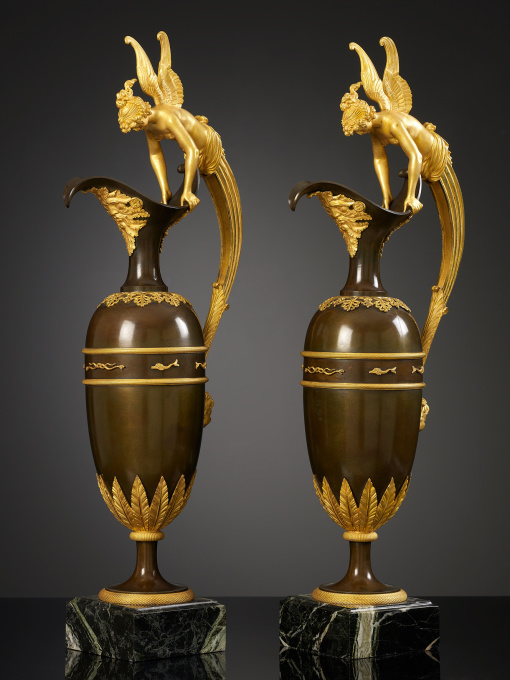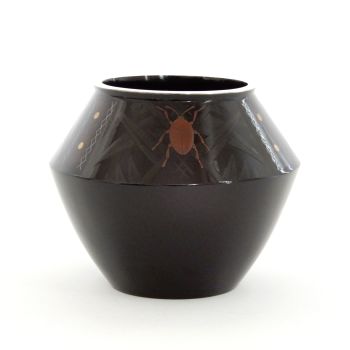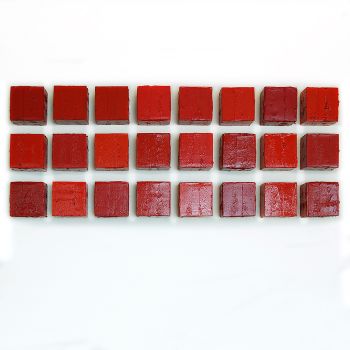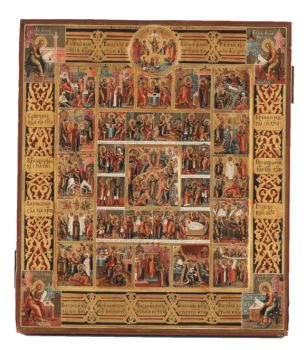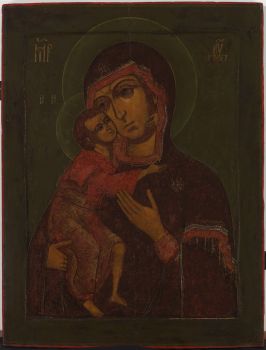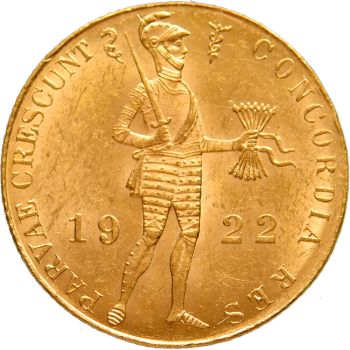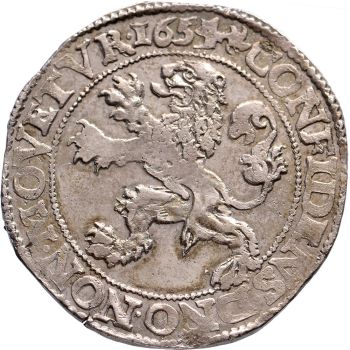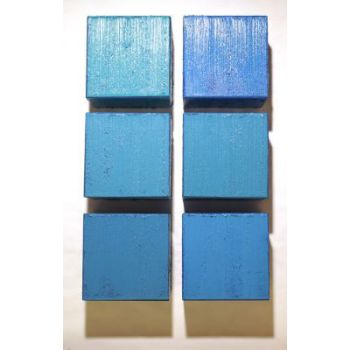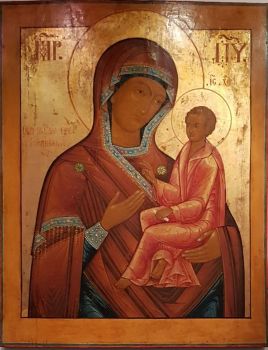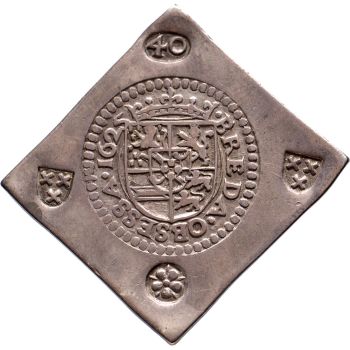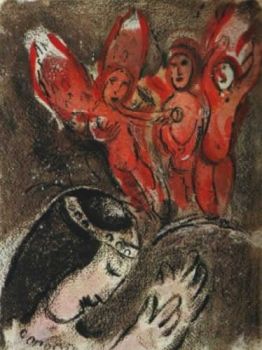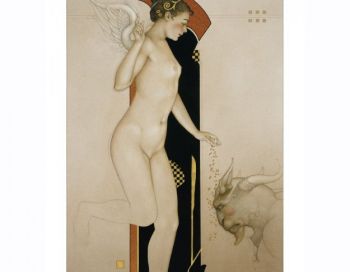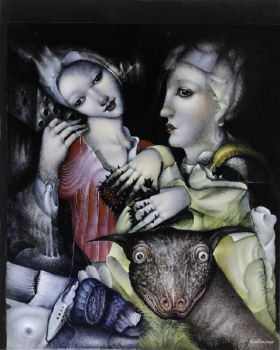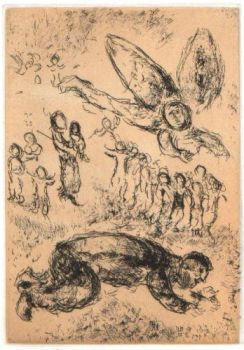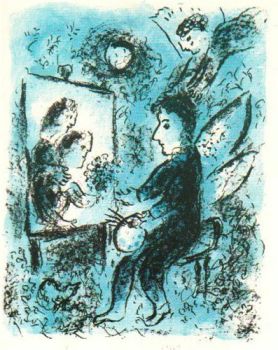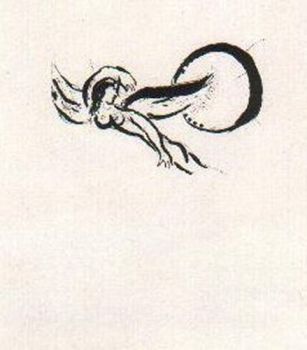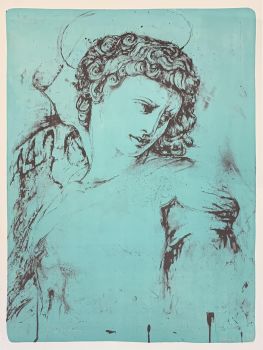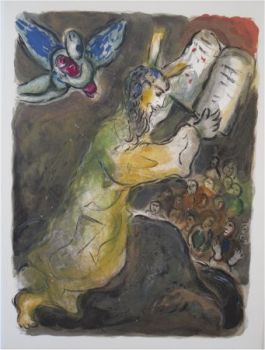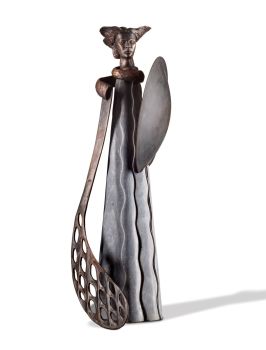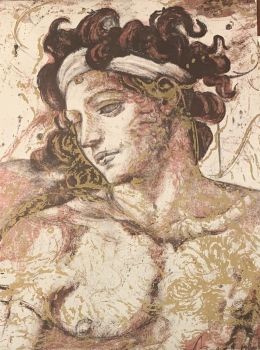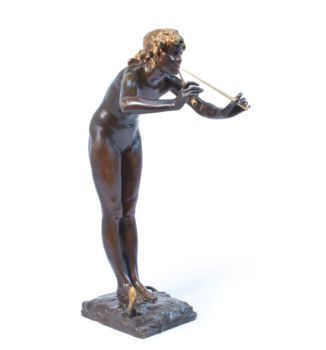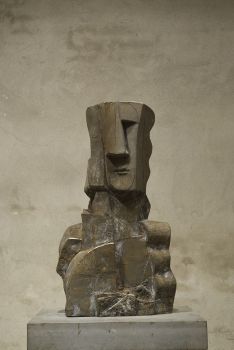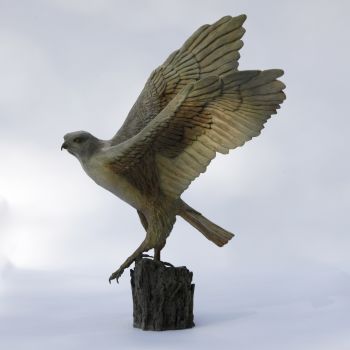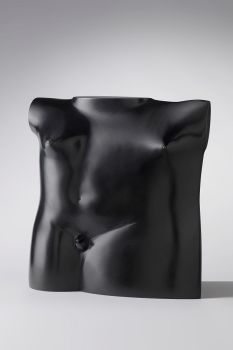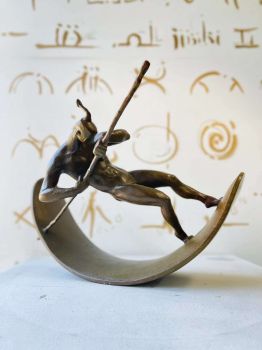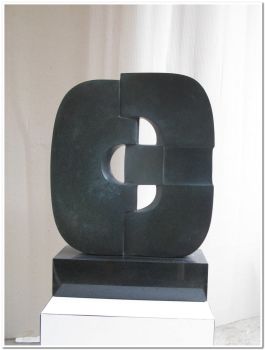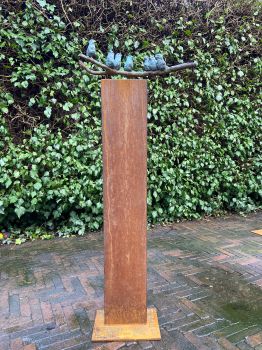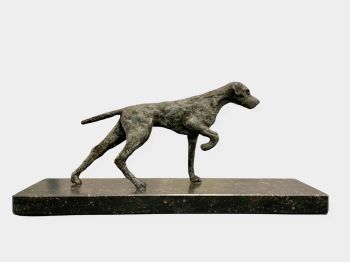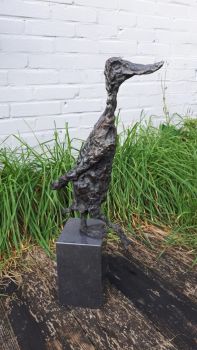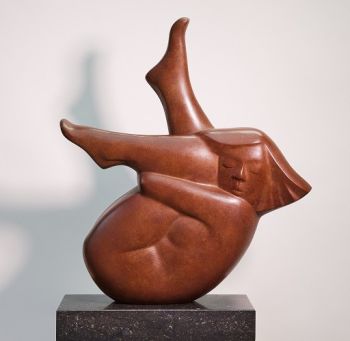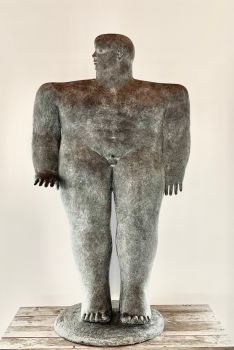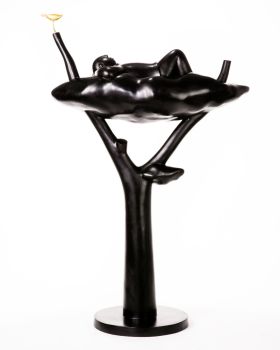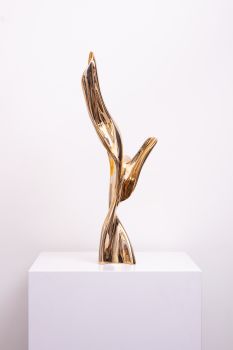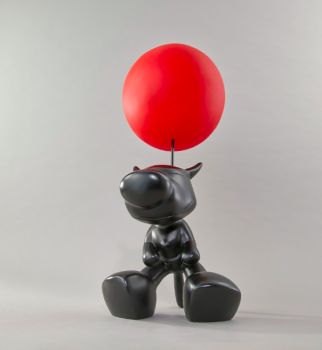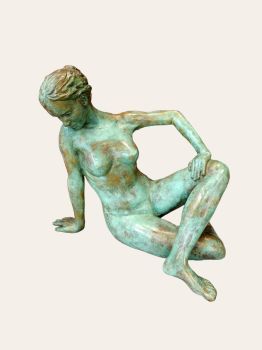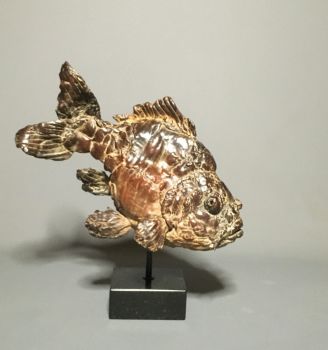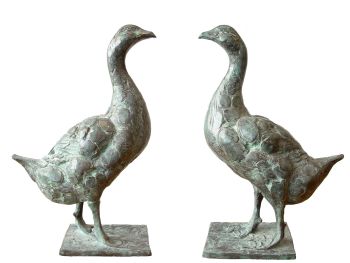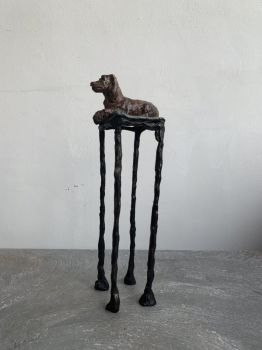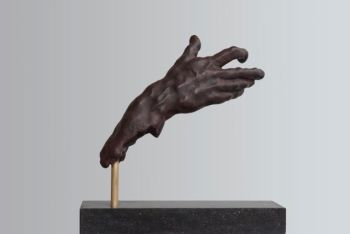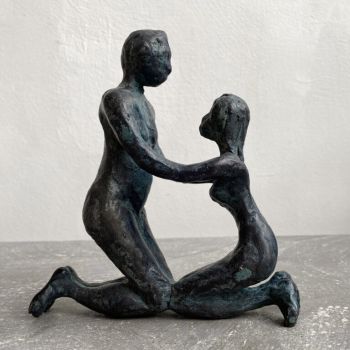Pair of large Empire Ewers attributed to Claude Galle 1810
Claude Galle
BronzoMetallo
61 ⨯ 22 cm
Attualmente non disponibile tramite Gallerease
- A proposito di opere d'arteA fine pair of Empire gilt and patinated bronze ewers attributed to Claude Galle of elongated baluster form mounted around the collar and base with stylized palmettes and acanthus leaves and centred around the body by a frieze of snakes and dolphins, the spout applied with a bearded male mask, the channelled and pearled scrolled handle supported on a putto mask and terminated above by a winged classical maiden clasping the rim, the whole on a spreading circular domed foot on a square Vert de Grèce marble base.
These outstanding and large ewers can be attributed to Claude Galle (1759-1815), one of the foremost bronziers and fondeur-ciseleurs of the late Louis XVI and Empire periods, whose oeuvre included a number of near identical ewers. Among them is a pair at Pavlovsk Palace and at Yusupov Palace at St. Petersburg, a pair in the Ostankino Palace, Moscow and another in the Württemberg Landesmuseum, Stuttgart. A further comparable pair, owned during the nineteenth century by the Earls of Essex at Cassiobury Park.
Among the many distinguished works made by Galle were a number of other ewers as well as urns, vases and clock cases which, as here, had classical winged maidens surmounting or forming part of the handle. Among comparable examples is a pair illustrated in "Gli Splendori del Bronzo, Mobili e Oggetti d'Arredo tra Francia e Italia 1750-1850", 2002, p. 140 no. 58 and also in Ottomeyer and Pröschel op. cit. p. 365, pl. 5.12.9. Works of this type proved particularly popular among English collectors but especially in Russia, where they were sometimes copied or inspired other luxury pieces by designers such as Andreï Voronikhin (1759-1814) and the bronzier Friedrich Bergenfeldt (1768-1822).
A leader in his field, Claude Galle was born at Villepreux near Versailles and then travelled to Paris to begin an apprenticeship under the fondeur, Pierre Foy. In 1784 Galle married Foy's daughter and on his father-in-law's death in 1788 Galle took over the workshop, which he built up into one the finest of its kind with a workforce of about 400 craftsmen. Galle promptly moved the business to Quai de la Monnaie (renamed Quai de 1'Unité) and from 1805 operated from 60 Rue Vivienne. First listed in the trade registers in 1784 he was received as a maître-fondeur in 1786 and promptly gained the first of many commissions from the Garde-Meuble de la Couronne under Jean Hauré from 1786-88. He is known to have collaborated with Pierre-Philippe Thomire, amongst others, and was responsible for the majority of bronzes d'ameublement supplied during the Empire to Château de Fontainebleau. Other Imperial commissions included the supply of numerous vases, ewers, light fittings, figural clock cases and other fine bronze furnishings for the palaces at Saint-Cloud, the Trianons, Tuileries, Compiègne, Rambouillet and a number of the Italian palaces including Monte Cavallo, Rome and Stupinigi near Turin. Yet despite numerous important commissions Galle was often in debt, partly on account of his lavish life style and also since many of his clients, such as Prince Joseph Napoleon, failed to pay him. After his death Galle's business was reopened and prospered under his son, Gérard-Jean Galle (1788-1846). His work can be found among the world's finest collections including those mentioned above as well as the Musée National de Château de Malmaison, the Musée Marmottan in Paris, the Museo de Relojes at Jerez de la Frontera, the Residenz Munich and the Victoria and Albert Museum in London.
Provenance:
ING Collection - A proposito di opere artistaClaude Galle è nato a Villepreux vicino a Versailles. Si trasferisce a Parigi per iniziare un apprendistato presso il fondeur Pierre Foy. Nel 1784, Galle sposò la figlia di Foy e quando Foy stesso morì nel 1788, fu Galle a rilevare il suo laboratorio e a trasformarlo in uno dei migliori del suo genere, impiegando circa 400 artigiani. Nel 1805, Galle trasferì la sua attività a Quai de la Monnaie e operò da 60 Rue Vivienne. Nel 1786 era già diventato Maître-Fondeur, e nel 1786-1788 ottenne la prima di molte commissioni dalla Garde-Meuble de la Couronne, sotto Jean Hauré. È noto per aver collaborato con Thomire ed è stato responsabile della maggior parte dei bronzi d'ameublement forniti durante l'Impero al castello di Fontainebleau. Le sue altre commissioni imperiali includono la fornitura di numerosi vasi, brocche, orologi figurati, lampade, per un certo numero di altri castelli francesi, così come per i palazzi italiani. Nonostante la sua popolarità, Galle era spesso indebitato a causa di uno stile di vita sontuoso e dell'incapacità di molti dei suoi clienti di pagarlo effettivamente. Dopo la morte di Galle la sua bottega fu continuata da suo figlio, Gérard-Jean Galle (1788-1846). Le sue opere si trovano tra le più belle collezioni del mondo, come quelle del Musée National de Château de Malmaison e del Victoria and Albert Museum di Londra.
Artwork details
Categoria
Soggetto
Stile
Materiale e Tecnica
Related artworks
Artista Sconosciuto
Set of eight gouache drawings1799 - 1801
Prezzo su richiestaRobert Schreuder Antiquair
Artista Sconosciuto
Braccialetto di diamanti del XVIII secolo con intagli di 2000 anni1790
€ 23.000Adin Fine Antique Jewellery
 A cura di
A cura diDanny Bree
Artista Sconosciuto
Set Franse Empire Pendules / Empire Lectura penduleearly 19th
Prezzo su richiestaKuipers Kunst & Antiek
1 - 4 / 15Artista Sconosciuto
Japanese art deco lacquervase with Scarab beetle motif1920 - 1950
Prezzo su richiestaDille Art
Artista Sconosciuto
UITGEBREIDE FEESTDAGENIKOON MET PASSIECYCLUS19th century
Prezzo su richiestaHeutink Ikonen
1 - 4 / 24Artista Sconosciuto
A pair of angels Antwerp, 17th century, Carrara marble17th century
Prezzo su richiestaFrederik Muller
1 - 4 / 24- 1 - 4 / 24

